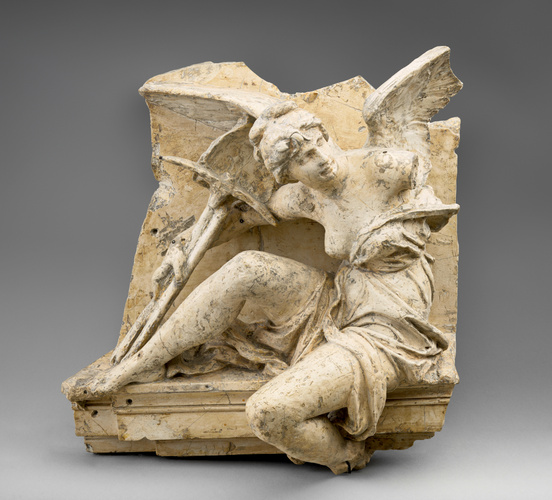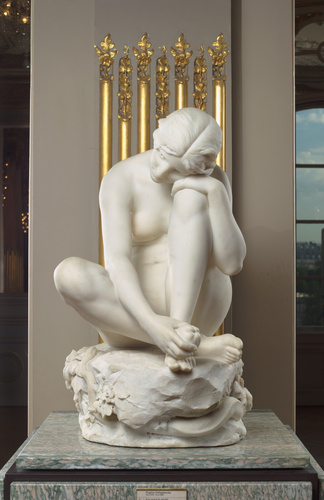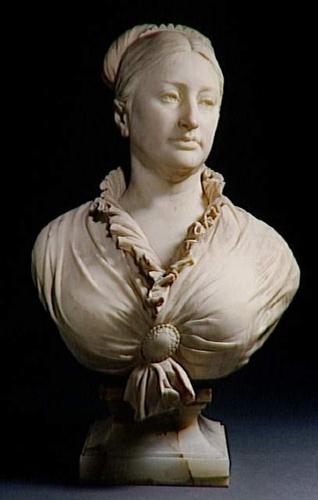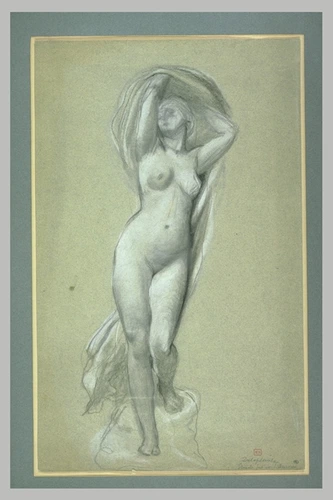Vierge au lys
Gentleness is the prevailing feature in Delaplanche's Virgin with a Lily: the slight sway of the body lightly resting on the left leg, the ample mantle covering her head, the tip of the face which holds its subtly modelled planes to the light, and the grave expression which avoids any hint of sentimentality. "This Virgin with a Lily is an exquisite piece of mystical sentiment," said one critic, "Fra Angelico did not dream of anything purer and Donatello produced nothing more artless". Delicacy in the treatment of the folds and the flesh make this figure an immaterial type, but it does not elude the presence of the body or a certain dreaminess, to the extent that some contemporaries thought the statue looked despondent, sluggish or disillusioned.
Delaplanche had a supple, scholarly style and was particularly appreciated during the Second Empire. But whereas under Napoleon III, sensuality, full forms and the study of movement dominated, Delaplanche belonged to a group of young sculptors of the fringe of the mainstream. The lively interest they showed in Florentine grace can be seen in their effective use of planes and draperies and here gives a figure which combines expressive unity with sensitive poetry. In most of these artists, a horror of theory was combined with a liking for studied compositions, repugnance for scholastic dogma and realism but a lingering faith in the importance of the subject.
Exhibited at the Salon in 1878, where it won a medal of honour, Virgin with a Lily was also displayed at the Musée de Luxembourg – then the Musée des Artistes Vivants – and at the ten-yearly Universal Exhibition in 1889.










